Multiobject
Spectroscopy
at the
Telescopio Nazionale Galileo

Overview
The Mask-Mode multiobject
spectroscopy (MM-MOS) at the Galileo
National Telescope is an extended MOS capability complementary to the real-time built-in
multislit assembly
of the Low Resolution Spectrograph DOLoReS. The
Mask-MOS facility represents a highly flexible tool for multiobject
spectroscopy,
with quality standards comparable to that of MOS facilities presently
available at 4m class telescopes, at a very affordable cost (£ 40000 Euro) and with
reasonable equipment size.
- MM-MOS will allow
spectroscopy for many tens of objects (usually about 30-40)
simultaneously over a useful field of 6' ´ 9'.5.
- The slitlets will have fixed
width 1.1 or 1.6 arcsec and user-defined length and tilt. Stacking
of two rows of spectra on a single mask is also possible using
an appropriate filter. Up to 100 spectra will be obtained with
this
technique.
- Mask design will be easy
using IMDI, a new, user-friendly IDL-based Interactive Mask
Design
Interface. Aperture masks will be efficiently designed using this portable
mask design software both at La Palma and at home institutions.
- Up to 5 slit masks, manufactured at the TNG
Observatory during daytime and mounted on removable plate holders, are
available for
observation each night. The number of masks that can be manufactured
for
each program is limited: see the TNG Instrument Pages for the current
TNG
policy. The masks are remotely positioned using the standard Slit
Exchange
Unit of DOLoRes.
The Mask-Mode MOS was implemented
as a standard facility for the DOLoReS spectrograph at the Telescopio
Nazionale
Galileo by a Project Team comprising Enrico V. Held (P.I.,
Project Scientist), V. Zitelli (co-Project Scientist), C.
Ciattaglia
(resp. for mechanics and electronics), and E. Giro (resp. for
code
development).

Scientific motivations for an extended MOS mode
Science objectives
In the VLT era, very deep
cosmological surveys will be conducted at 10m class telescopes using
large-field spectrographs (e.g., VIMOS). Still,
multiobject spectroscopy at 4m class telescopes still offers a good
alternative for less extreme targets in fields with size of the order
10', such as:
- redshift and stellar
populations of galaxies in clusters at intermediate distance;
- galaxy kinematics in cluster
and field galaxies at intermediate redshift;
- individual stars in star
clusters and Local Group galaxies;
- globular cluster systems in
nearby galaxies.
The Galileo National Telescope will
complement the VLT for targets accessible from both hemispheres, while
representing the only competitive national facility to conduct MOS
observational programs in the northern sky.
Mask - Mode MOS vs. Multislit
Assembly.
The multislit assembly provided
with the Low Resolution Spectrograph DOLoRes (19 slits with
fixed length of 20 arcsec) will be the standard option for most
programs. It has several practical advantages, first of all a remotely
controlled slit setup, possibly during the observing night, and optimal
quality of the slitlets.
However, there remain a number of
scientific cases where the uniform and fixed (along the spatial axis)
coverage by the multislit assembly seriously affects observation
efficiency. On this basis, an extended MOS mode was proposed by members
of the Instrument Definition Team of DOLoRes (Held,
Ramella & Cristiani 1995). A similar concept was also adopted
for MXU
at ESO.
In the Mask-Mode MOS (MM-MOS),
the targets
will be observed through multislit masks prepared for each
target
field using a mask manufacturing facility locally available at
the
TNG. The main advantage of this mode is its flexibility: mask can
include
a large number of slits with arbitrary position, orientation and
shape,
with very little constraints aside from those needed to prevent
spectrum
overlap. Obviously, masks also have some drawbacks: they must be prepared
in advance of the observing night, requiring specialized staff and careful
processing.

Mask design
The following flow chart
summarizes the mask design and manufacturing process outlined in the
following sections.
- The first step for making
the
masks will usually consist in collecting short exposure images of the
target
fields with DOLoRes well in advance of the observing run. This pre-imaging
should be routinely taken in service mode for proposals
approved by
the TAC. In some special cases masks can be produced from a target list
with
astrometric precision better than 0.2 arcsec.
- Measuring the target
positions from the image, setting up the slits, and producing the final
drawing necessary to operate the cutting machine are performed using a
newly written Interactive Mask Design Interface (IMDI),
a graphical interface based on IDL widget procedures.
- IMDI was conceived to be
fully integrated into the DOLoRes User Interface in the
telescope/instrument control environment. A standalone version
is provided to project PI's to design the masks at their home
institution (important: IDL 5.2 or later must be
available), using the pre-imaging observations.
| Using the Interactive Mask Design
Interface.
The rectangles represent the location of the spectra, calculated from
the
instrument database. Most operations are executed using cursors,
buttons
and sliders in a self-explaining sequence. Instructions
here. |
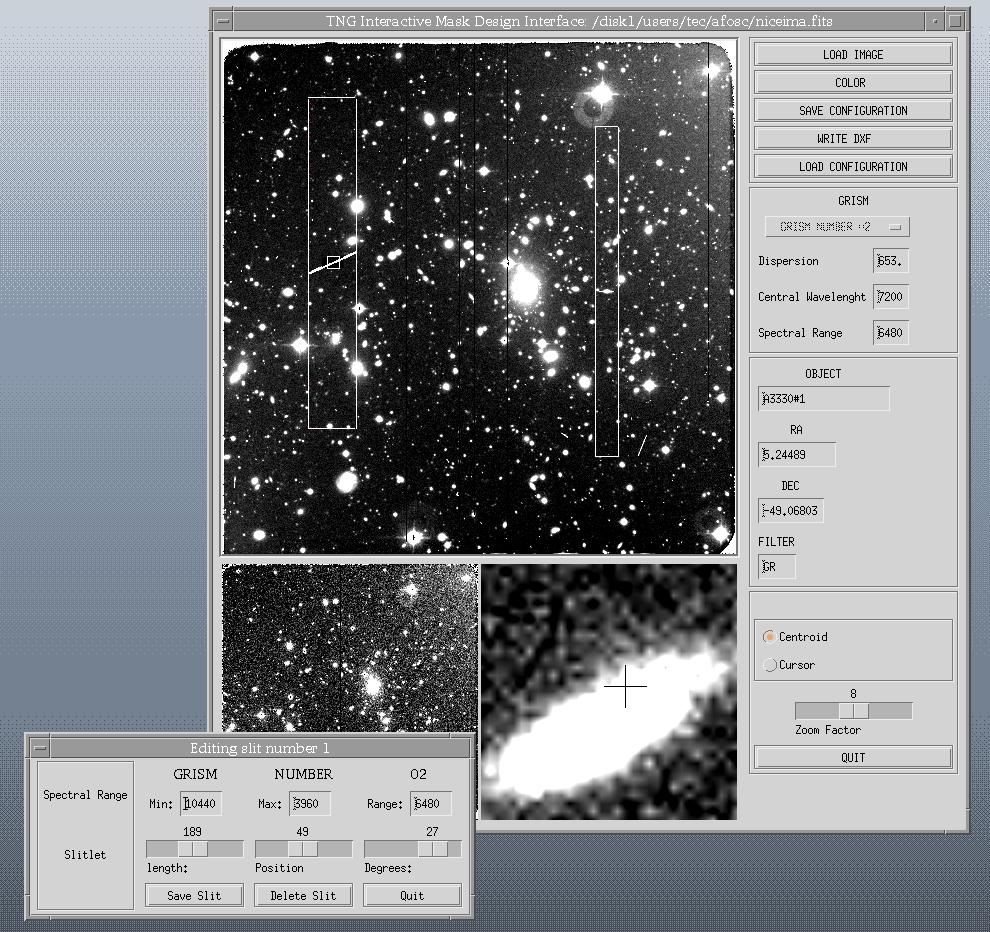 |
Some features of IMDI:
- The basic setup parameters
(wavelength range, spatial scale, etc ...) are directly read from a setup
database and the image FITS header. The user only needs to
select the preferred grism, load the image and start picking up the
target objects.
- The centering, as
well as the length and position angle of the slits, are
interactively set under control of an anti-overlap algorithm.
Stacking of two rows of spectra is also possible.
- The save/restore
feature allows users to suspend and resume mask editing.
- The end products of IMDI
include, in addition to the mask-cutting drawing in the
standard Drawing Interchange File Format (DXF), further documentation
specifying the setup of DOLoRes
and telescope associated with the mask.
- All the files shall be sent
to the TNG team (e.g., via ftp upload into a dedicated area)
for mask production under the responsibility of mechanics staff.

Mask manufacturing
The control computer and
software
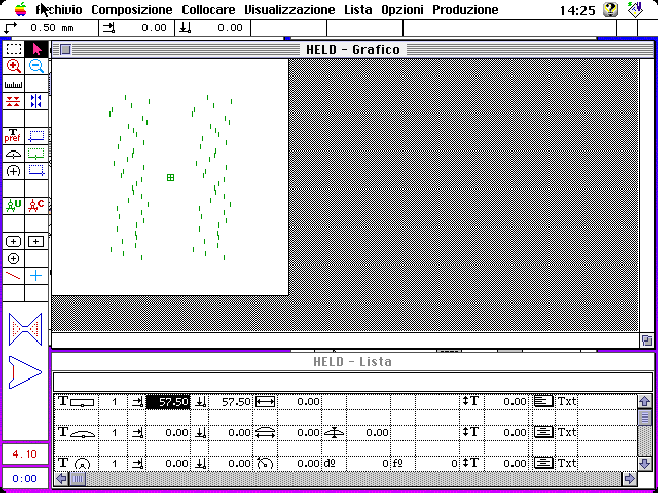 |
A dedicated PowerPC computer, equipped with a network
interface card and TCP/IP communication software, controls the cutting
machine via
the Quick Plate (QP) Software. The drawing files produced by the
astronomer
are converted into low-level instructions used to drive the milling
machine. |
The milling machine
|

|
|
| A general view of the mask manufacturing facility. All the
electronic components and the control computer are conveniently
arranged in a dedicated rack close to the CNC machine. Mask production
is managed by TNG staff
only. |
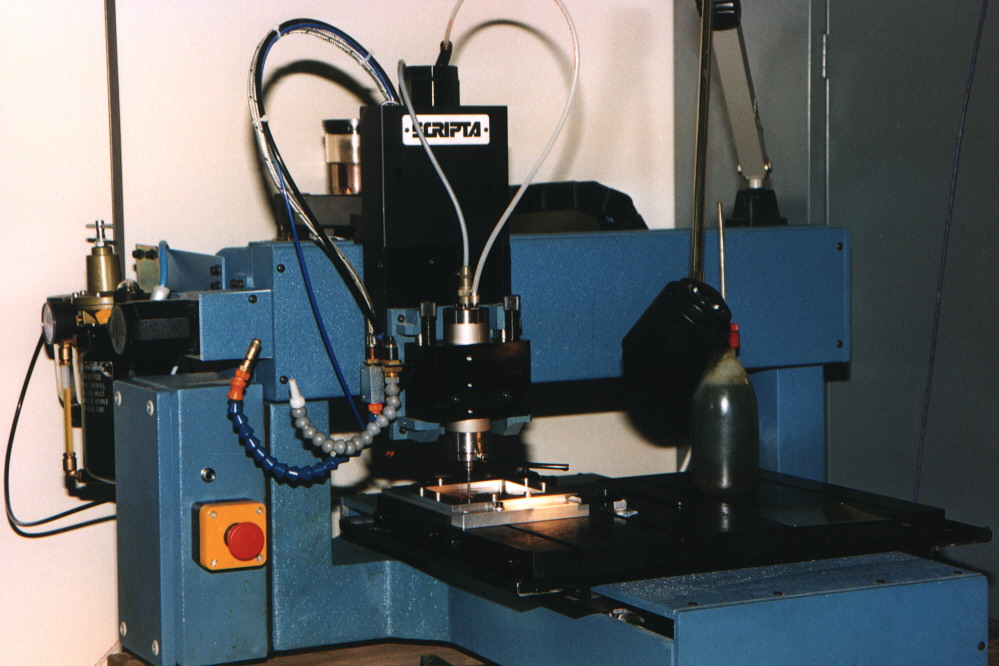 |
- The milling machine, heart
of
the system, is a high-precision commercial CNC cutting plotter by
Scripta
s.r.l., compliant with the required positioning accuracy (0.01 mm).
- The blank mask, a thin 10´ 10 cm square plate of
brass, is securely clamped to the bed of the machine by a custom-made
mask holder.
- The cutting tools are
special cylindrical micro-mills with diameter 0.2 and 0.3 mm,
corresponding to about 1.1 and 1.6 arcsec slits at the TNG.
- The cutting machine is
equipped with a custom high-speed electrospindle reaching 90000 r.p.m.
Mask cutting and processing
|
|
|
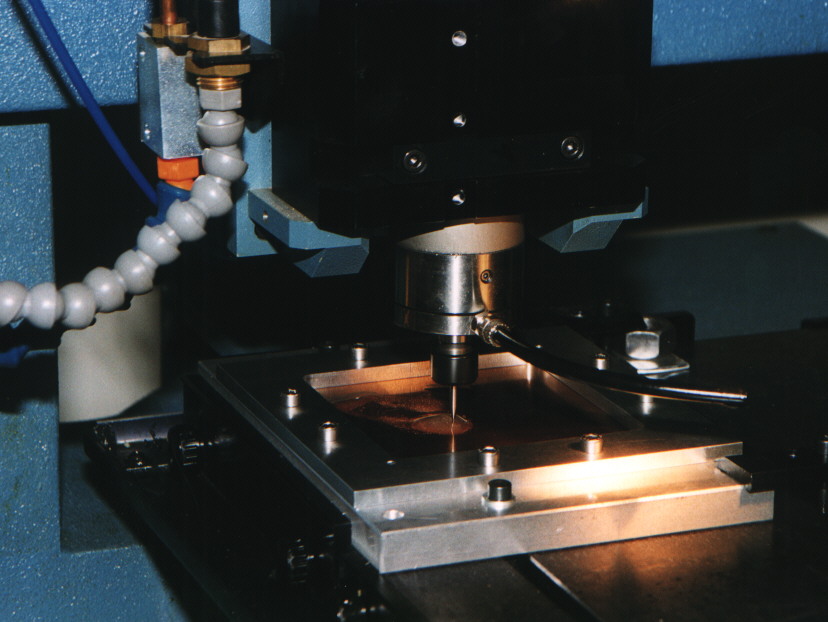
|
A
detail of the machine head cutting a mask during our tests of different
materials and tools. |
|
|
|
|
|
| An example of a test multislit mask where several slits
were cut using two different tools (200 and 300 m m in diameter). This plate
was made out of a 0.2 mm thick
bronze sheet. After cutting, the masks are effectively cleaned by
ultrasonic
washing. Two reference holes ensure accurate repositioning of the mask
in
the plate holder. A third pinhole made during mask cutting (not shown
here)
will ensure correct mounting. |
|
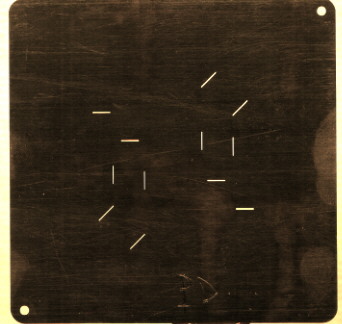 |
|
The masks: quality checks
|
|
| Checking
the quality of the slitlets is an important step of mask production.
After inspection at the microscope, the plates are painted with an
antireflection coating, mounted on the holding frames, and kept in a
dust-free area until the frames are mounted in the slide assembly of
DOLoRes. |
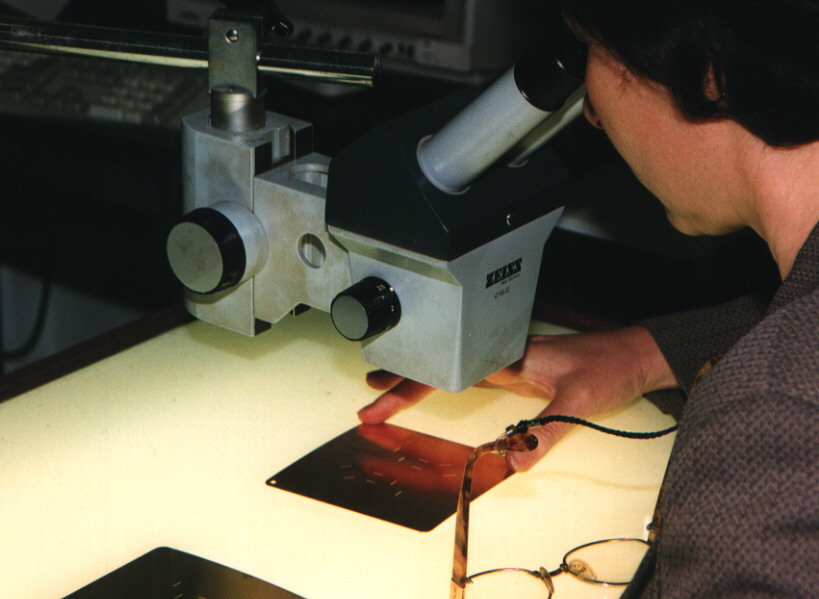
|
 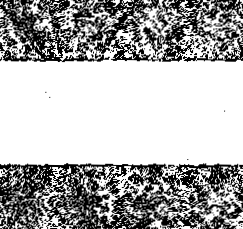 |
This figure shows a microphotograph of a 200 m m slitlet after ultrasonic
cleaning. The enhanced contrast image allows assessing the degree of
micro-roughness of the slit edges. Both the r.m.s of the slit edges and
their parallelism over a 20'' length are better than 3 m m. |
|
|
Several tests were made to obtain
the best possible quality for the slits. In particular, we measured the
micro-roughness and parallelism of the slit edges and the relative
positions of the slits. We ended up with the following characteristics
of the masks:
| Positioning
accuracy of the slit centers |
± 10m
m or ±
0.06" |
| Parallelism
of the slit edges over a slit length of 20 arcsec |
± 3 m
m |
| Minimum
slit width on the focal plane |
200
m m or 1.1" |
| Micro-roughness
of the slit edges |
± 3 m
m (rms) |
These characteristics basically
meet the specifications, except for the minimum slit width that is
constrained by the size of micro-mills available on the market.

MOS observations.
Operation flow
This flow chart outlines the
telescope pointing and target acquisition procedures, once the masks
have been mounted in the DOLoRes slide assembly. The adopted procedure
assumes that the masks can be repositioned on the optical beam with
high accuracy (i.e. 5 m m or better). The pointing sequence is guided by a MOS
Pointing User Interface developed during the pre-commissioning tests.
Pre-commissioning tests
|
The mask design software and the pointing procedures were
pre-commissioned
in advance of th efirst light of TNG using the 1.8m telescope at Asiago
Cima Ekar. The
imaging
low-resolution spectrograph AFOSC was employed as a working model of
DOLoRes.
MOS spectra of galaxies in three nearby Abell clusters have been
obtained
on the night of Jan. 11, 2000 using a scaled version of the masks for
TNG. |

|
MOS
commissioning at the TNG
Instrument history
- Since June 27, 2000 the
milling machine is back to activity in the machine-shop of the TNG. The
software
and hardware have been succesfully tested by two of us (EH,CC) together
with
the staff of the TNG. Two special masks have been realized and used for
tests of DOLoRes during the commissioning phase.
- The MM-MOS has been
successfully commissioned in Dec. 2000. Since then, several guest
observers have made
use of MOS.

Documents
The following documents are
available for download as gzipped postscript files:
- Held E. V., Ramella M.,
Cristiani S. 1995,
Proposal to the Consiglio delle Ricerche Astronomiche for an extended
MOS at the TNG.
- Held E.V., Ciattaglia S.C.,
Giro E., Zitelli V. 2000. Mask Mode MOS at
the TNG: a flexible approach to multi object spectroscopy, in
Telescopes,
instruments and data processing for astronomy in the year 2000, G.
Sedmak
ed., 12-1 May 1999 S.Agata (NA), Mem.S.A.It., in press
- Held E.V. 2000, Report to the C.N.A.A. on the
status of the MM-MOS project.
Please also read credits and
references.

 Questions,
comments and suggestions are welcome.
Questions,
comments and suggestions are welcome.
![]()
![]()
![]()
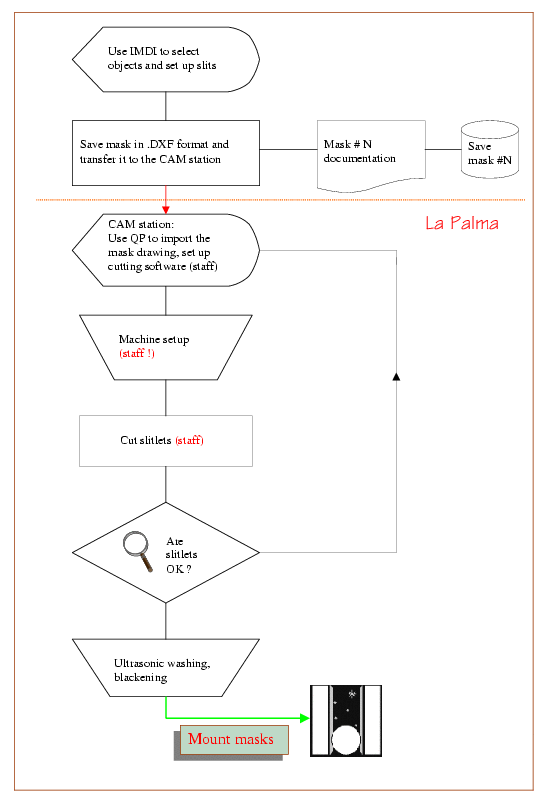


![]()
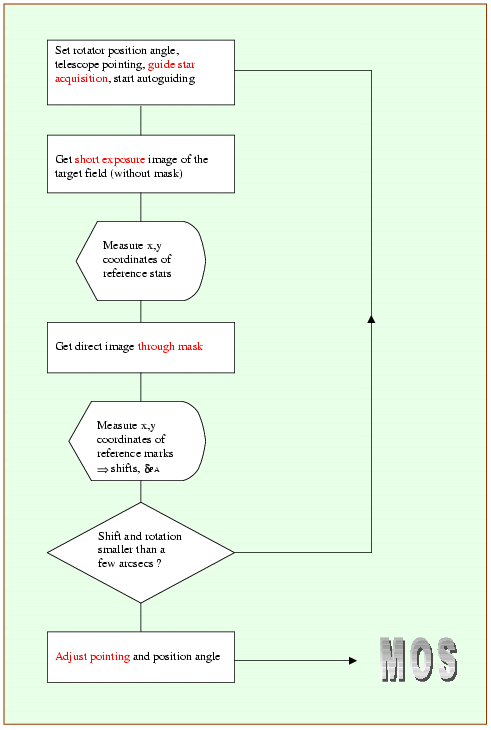

![]()
![]()
 Questions,
comments and suggestions are welcome.
Questions,
comments and suggestions are welcome.